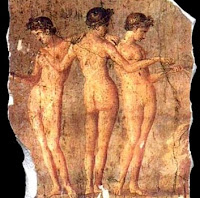I.
One of the most surprising things about Lady Chatterley's Lover (1928), is that it closes with an affirmation of chastity, or what Oliver Mellors likes to call the peace that comes of fucking.
In his Grange Farm letter to Connie, he informs her of his intention to remain patient during their time apart and abide by the little flame that burns between them, trying not to think of her too often, as this only tortures him and wastes something vital [1].
He writes:
"So I love chastity now, because it is the peace that comes of fucking. I love being chaste now. I love it as snowdrops love the snow. I love this chastity, which is the pause and peace of our fucking, between us now like a snowdrop of forked white fire. [...] Now is the time to be chaste, it is so good to be chaste, like a river of cool water in my soul. I love the chastity now that flows between us. It is like fresh water and rain. How can men want wearisomely to philander. What a misery to be like Don Juan, and impotent ever to fuck oneself into peace [...]" [2]
II.
Of course, this real and accomplished chastity [3] won't come as too great a surprise to readers who are familiar with Lawrence's Pansies, a collection of verse written in 1928/29 in which the cry of noli me tangere rings throughout and the theme of chastity - understood as freedom from the mind and hands exploiting the sensual body [4] - is key.
"Great is my need to be chaste / and apart, in this cerebral age" [5], writes the poet for whom sex is a state of grace. All he wishes of a woman is that she shall feel gently towards him when his heart feels kindly towards her: "I am so tired of violent women lashing out and insisting / on being loved, when there is no love in them" [6].
Touch comes slowly, writes Lawrence, if ever; "when the white mind sleeps" [7] and cannot be forced:
For if, cerebrally, we force ourselves into touch, into contact
physically and fleshly,
we violate ourselves,
we become vicious. [8]
All of these ideas coalesce in the poem 'Chastity' -
Chastity, beloved chastity
O beloved chastity
how infinitely dear to me
chastity, beloved chastity!
That my body need not be
fingered by the mind,
or prosituted by the dree
contact of cerebral flesh -
O leave me clean from mental fingering
from the cold copulation of the will,
from all the white, self-conscious lechery
the modern mind calls love!
From all the mental poetry
of deliberate love-making,
from all the false felicity
of deliberately taking
the body of another unto mine,
O God deliver me!
leave me alone, let me be!
Chastity, dearer far to me
that any contact that can be
in this mind-mischievous age! [9]
III.
Lawrence's notion of chastity is, therefore, distinct from the Christian virtue synonymous with moral purity and closely tied to an ideal of celibacy.
In fact, if anything, Lawrence's model of chastity is closer to Nietzsche's than the Church's and he would doubtless echo Zarathustra in saying that whilst with some Christians chastity may indeed be a virtue, with many others it is almost a vice; such persons may exercise self-restraint, but doggish lust looks enviously out of all that they do.
It is preferable, says Zarathustra, to fall into the hands of a murderer than into the arms of a person driven by lust in which there is no innocence. Individuals who find it difficult to be chaste - and whom it makes resentful and cruel as well as lustful - should be dissuaded from it.
Only those for whom chastity is a form of victory - the peace that comes of fucking - should practice it; for they are kinder (and warmer) of heart and know how to laugh even at their own selves:
"They laugh at chastity too and ask, 'What is chastity?
Is chastity not folly? Yet this folly came to us, not we to it.
We offered that guest hostel and heart: now it dwells with us - may it stay as long as it will!" [10]
Notes
[1] It's debatable what this means, but I read it as a coded confession from a fetishistic masturbator who was previously
only too happy to sleep with Connie's flimsy silk nightdress pressed atween his legs at night, for company. See D. H. Lawrence, Lady Chatterleys Lover and A Propos of Lady Chatterley's Lover, ed. Michael Squires, (Cambridge University Press, 1993), p. 249.
[2] D. H. Lawrence, Lady Chatterley's Lover, p. 301.
[3] See A Propos of Lady Chatterley's Lover, where Lawrence uses this phrase, writing: "Years of honest thought of sex, and years of struggling action in sex will bring us at last where we want to get, to our real and accomplished chastity [...]", p. 309.
[4] D. H. Lawrence, Fantasia of the Unconscious, ed. Bruce Steele, (Cambridge University Press, 2004), see Chapter X. The line quoted from is on p. 146.
[5] D. H. Lawrence, 'Noli me tangere', The Poems, p. 407.
[6] D. H. Lawrence, 'All I ask', The Poems, p. 415.
[7] D. H. Lawrence, 'Touch comes', The Poems, p. 408.
[8] D. H. Lawrence, 'Touch', The Poems, p. 406.
[9] D. H. Lawrence, 'Chastity', The Poems, p. 407.
[10] Nietzsche, Thus Spoke Zarathustra, I. 13, 'On Chastity', in The Portable Nietzsche, ed. and trans. Walter Kaufmann, (Penguin Books, 1988), p. 167.







